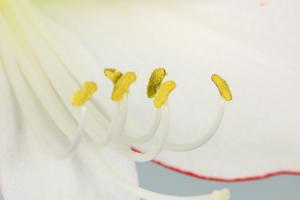What Part of the Plant Cell Stores Water?
Plants are fascinating organisms that have unique features in their cells that allow them to survive in various environments. One of the most important parts of the plant cell is the vacuole, which is responsible for storing water and other important substances. In this article, we will take a closer look at the vacuole and how it plays a crucial role in the life of the plant.
What is the Vacuole?
The vacuole is a storage compartment found in plant cells that is filled with a watery fluid called cell sap. It is surrounded by a membrane, which is also known as the tonoplast, and contains a variety of dissolved substances such as sugars, amino acids, ions, and pigments. The size and shape of the vacuole can vary depending on the type of plant cell, but it is typically the largest organelle in the cell.
Functions of the Vacuole
The vacuole has several functions that are vital for the survival and growth of the plant. One of the main functions of the vacuole is to store water, which is essential for maintaining turgor pressure in the plant cells. Turgor pressure is the pressure exerted by the cell contents against the cell wall, and it is what gives the plant its shape and structure. When a plant cell loses water, it becomes flaccid and can wilt, which can affect the health of the plant.
In addition to storing water, the vacuole also helps to maintain the pH balance of the plant cell. It does this by storing acids and other substances that can affect the pH of the cytoplasm. The vacuole also plays a role in detoxification by storing harmful substances and isolating them from the rest of the cell. Finally, some plants use their vacuoles to store pigments that can give their petals and leaves their bright colors.
Vacuole Formation and Maintenance
The vacuole is formed during the process of cell division when small vacuoles fuse together to form a larger one. As the plant cell grows, the vacuole also grows, increasing in size and volume. The vacuole is essential for the health and survival of the plant, so its maintenance is crucial.
The vacuole is maintained by a network of proteins and enzymes that regulate the flow of water and other substances in and out of the vacuole. This network is also responsible for degrading and recycling old or damaged cell components, including the vacuole itself. The regular turnover of the vacuole is essential for maintaining the proper function of the plant cell.
Conclusion
In conclusion, the vacuole is a vital part of the plant cell that stores water and other important substances. It helps to maintain turgor pressure and the pH balance of the plant cell, and also plays a role in detoxification and pigment storage. The vacuole is formed during cell division and is maintained by a network of proteins and enzymes. Understanding the importance of the vacuole helps us appreciate the amazing complexity of plant cells and their ability to adapt to diverse environments.

 how many times do yo...
how many times do yo... how many planted tre...
how many planted tre... how many pine trees ...
how many pine trees ... how many pecan trees...
how many pecan trees... how many plants comp...
how many plants comp... how many plants can ...
how many plants can ... how many plants and ...
how many plants and ... how many pepper plan...
how many pepper plan...































